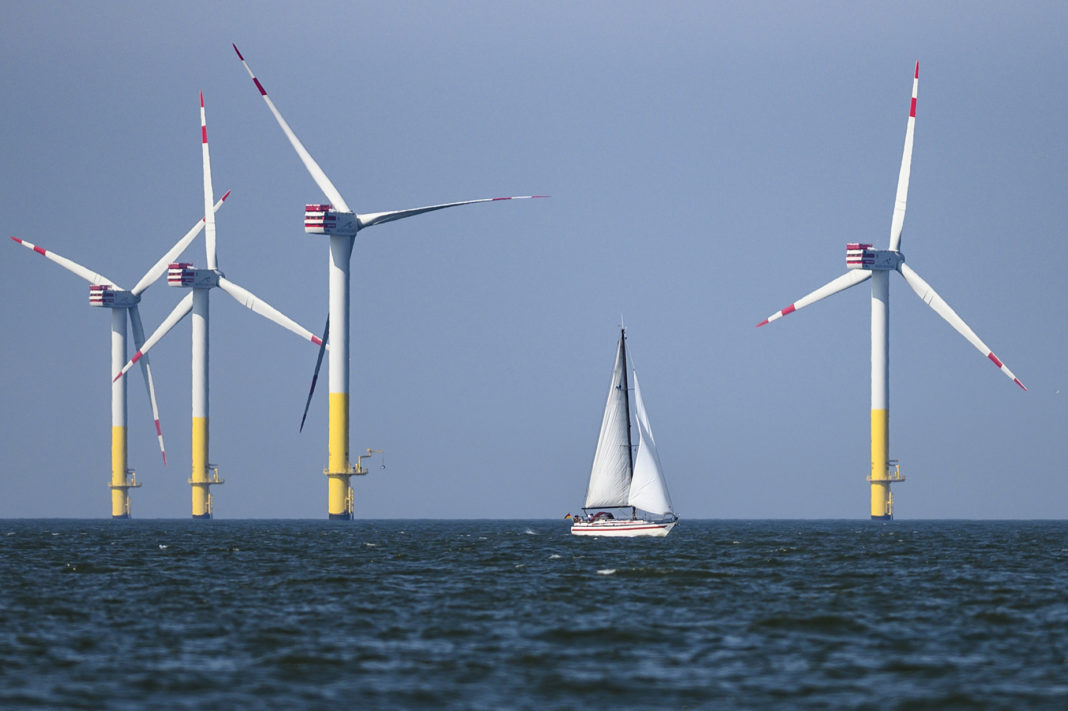Saare Wind Energy, the company developing an offshore wind farm west of the Sõrve peninsula on the island of Saaremaa, said they wish to develop a 1,400 MW wind farm instead of the initially planned 600 MW one.
Saare Wind Energy's plan to develop an offshore wind farm near the Sõrve peninsula was realized into an application for a building permit in 2015. The government granted them the permit in May of last year and the company was able to begin assessing the area. As of the plans drawn up then, the 100-turbine farm was supposed to provide 600 MW in energy.
But as turbines get larger and more powerful, the company is not hoping to grow out of its existing plans and instead develop a 1,400 MW wind farm. For this to happen, the company hopes to be granted more sea to develop on.
Saare Wind Energy board member Kuido Kartau said the 6 MW turbines the company took into account when drawing up plans in 2015 are [[0]] longer even made. "And we will not have them when we start building, too. We think the turbines to place there are 14 MW each. Those do not exist today either, but they will in a few years. 10-12 MW turbines are available today," Kartau said.
Kartau added that sub-1,000 MW wind farms are not even developed as much nowadays and farms will get even more powerful as time goes on.
But larger turbines require more space. If a 6 MW turbine reaches 180 m high, larger turbines stretch over 300 m with a rotor diameter of up to 280 m.
"The general rule is that the distance between two turbines should span six rotor diameters, so we are speaking of a distance of at least 1.5 km," Kartau said.
So the company turned to the Consumer Protection and Technical Regulation Authority in the fall to increase the building permit area by 27 percent. Legislation would allow for the area to be increased or moved by up to 33 percent.
The board did not grant them the proposed area, noting that the maritime spatial plan is being drawn up and it is not even certain that there could be any turbines placed just North of the planned offshore wind farm area. Secondly, the authority noted that the area can be extended if it is based on research, which is currently being conducted.
Kartau said the company will not give up on the idea, however. "We think there was sufficient information now to justify the extension. But it is clear that if we cannot do it, we will continue conducting research and if there is more information, we will update our proposal," he said.
The government hopes to establish the maritime spatial plan in the beginning of 2022 at the latest. Multiple companies and entrepreneurs are awaiting the exact date, as there are multiple building permit applications to send. Among those is Sunly Wind OÜ, whose permit plan overlaps with that of Saare Wind Energy's. Kartau believes that current legislation would give priority to the already proposed permit.
Still, the company has a plan B. They recently applied for a completely new building permit, Kartau said. "We did indeed apply to cover the extended area with a completely new application. But this new application is larger and will guarantee a buffer area or empty space around the area where we wish to plant turbines."
A buffer area would ensure that all other turbines would be placed at least 2.7 km away from Saare Wind Energy's wind farm. "It is not just because we want to expand and take away from others. It is just a practical and technological solution based on the physics of the wind's movement on sea. Meaning, you cannot exactly build wind farms right aside each other," Kartau noted.
If the company's shiny new application is taken up for proceedings, it will compete with all other applications on equal conditions. "For competing applications, the application that is most in accordance with the social and economic needs of the Estonian society as a whole will be determined," said Consumer Protection and Technical Regulation Authority construction law and railway department head Liina Roosimägi.
"In case it is not possible to make such a decision, a written auction will instead be held," she added.
If neither of Saare Wind Energy's plans passes the process, meaning they must remain in the limits of their 2015 plan, the company plans on placing some 75 turbines. "And that is in the magnitude of a gigawatt (GW = 1,000 MW - ed), which should also be the minimum size of a wind farm to be realized," Karnau said.
Allikas: ERR






